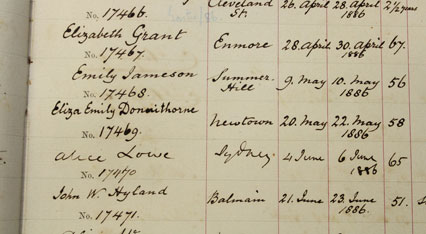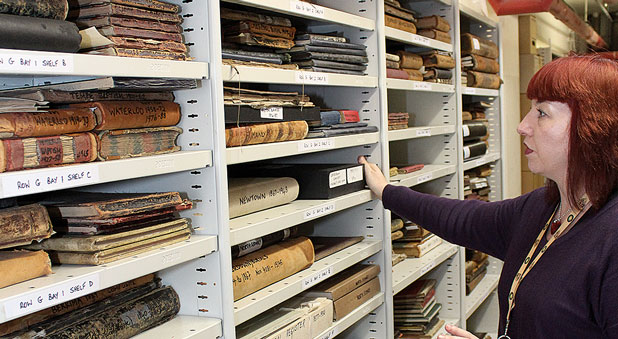Some of the oldest records in Australia – parish registers from Sydney’s early colonial churches – are to be digitised under an agreement between the Diocese of Sydney and ancestry. com.
Ancestry will digitise baptism, confirmation, marriage and funeral registers from 1824 to 2005 and in return, minute books from diocesan boards and Synods will be scanned by the company for preservation in digital format.
“This Ancestry mass digitisation project is a means by which we can transcend paper-based format and the limitations on access it provides, in order to provide access to the data to the widest number of interested persons possible,” said diocesan archivist Dr Louise Trott. “At the same time we obtain a digital preservation copy.”
The agreement parallels a similar but larger-scale project undertaken by the State Records Authority of NSW in 2012. The former director of the authority, Alan Ventress, has been volunteering at the Diocesan Archives for the past three years and Dr Trott says his knowledge and preparation work has been invaluable for the new project.
Although now housed in secure units in the Diocesan Archives, many early registers have had to be repaired due to wear and tear. They provide a snapshot of Sydney from its earliest days until now, containing notable gures in church and colony including the Rev Samuel Marsden, pioneer missionary to New Zealand, and Archdeacon William Cowper, an early supporter of The King’s School in Parramatta and rector of St Philip’s, Church Hill. The Rev William Branwhite Clarke, former headmaster of King’s and rector of Castle Hill and Dural in the 1840s, also signed many of the entries for his parishes, which later included Campbelltown and North Sydney.
 Some famous Sydneysiders also feature in the records. One of the most unusual is Eliza Emily Donnithorne, whose funeral and burial at St Stephen’s, Newtown was recorded in 1886.
Some famous Sydneysiders also feature in the records. One of the most unusual is Eliza Emily Donnithorne, whose funeral and burial at St Stephen’s, Newtown was recorded in 1886.
Miss Donnithorne was a well-known eccentric who, according to some versions of her story, never left her house after being jilted on her wedding day in 1856. It was said that the wedding breakfast remained undisturbed on her dining table until it rotted away. If the story sounds familiar, some claim (amid controversy) that it was the real-life inspiration for Charles Dickens’ novel Great Expectations, with Miss Havisham modelled on Eliza Donnithorne.
Feature Photo:History preserved - Dr Louise Trott in the Diocesan Archives

















